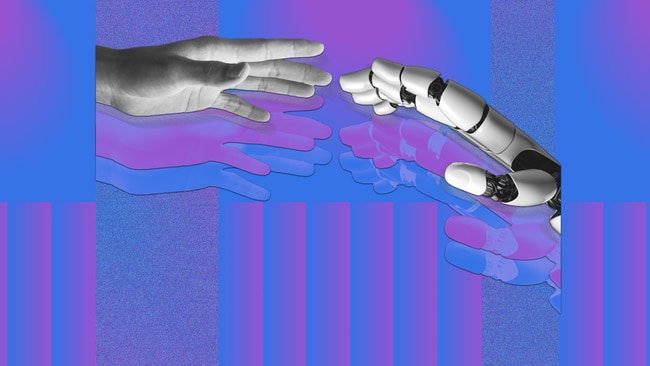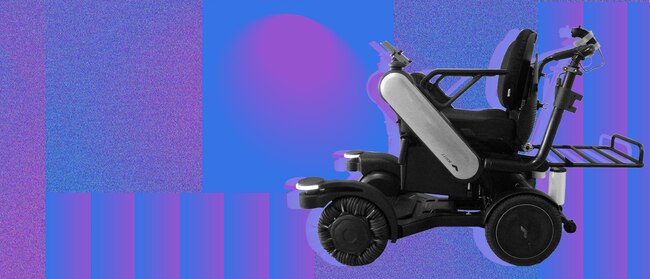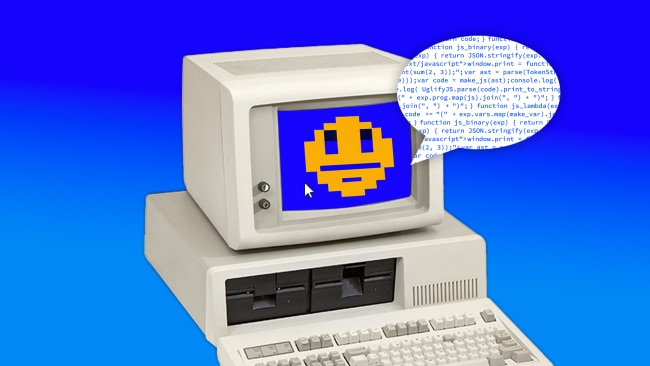Critical, well-paid jobs in AI you haven't heard of yet
Here are five jobs of the future you've never even heard of.

Here are five jobs of the future you've never even heard of.
The artificial intelligence revolution is two to three years away. So, if you want in on the new world and a fat salary, now's the time to knuckle down.
That's according to Digital Strategist and Deputy Director of RMIT's Centre for Industrial AI Research & Innovation, Rita Arrigo.
"Back in the days when the computing revolution was happening, people were like, oh my god, the computers are going to take over my jobs. But actually, they didn't ... they made our jobs more interesting. Now we become slaves to them because we're waiting for the next revolution," she said.
"I think this particular revolution that's coming with AI and emerging technologies, is one that we all need to embrace. It's not going to be about just having the IT department ... It's going to become core to the changing of all roles."
Arrigo talks us through five jobs of the AI revolution you've probably never even heard of.
Human-Machine Teaming Manager

Purpose: Finding ways for humans and robots to work together and figuring out how robots can function well within a team. A human-machine teaming manager would model and implement robot decision-making to control how they collaborate with humans, based on a particular goal.
An example of what you'd do: There are rules that exist so that ships avoid collisions, such as staying a certain distance away from another vessel. Historically, these regulations have been written for and interpreted by humans. As autonomous or unmanned ships (run by models which tell them which direction to go or pick up rubbish) are built, these rules for avoiding collisions will need to be re-written so that the unmanned vehicles can communicate with humans.
Skills and training needed: The field requires a combination of engineers (with programming, engineering or computing skills) as well as cognitive scientists.
Enterprises hiring for this job: Technology companies such as Microsoft, which has its own robot operating system called ROS, or software companies like Nvidia. They developed the Omniverse which allows you to simulate robots and humans in the same virtual platform.
What’s it called on the job application? Digital specialist, digital innovation, autonomous systems engineer
Typical salary in Australia: $112-116k
Tide Water Architect

Purpose: Looking at the global challenge of rising sea levels and figuring out how to manage it.
An example of what you'd do: Installing wind turbines in the ocean to understand the tides or predict the tides. This could help with forecasting whether a tsunami will occur, for example.
Skills and training needed: This field requires knowledge of environmental science, as well as the ability to create and analyse computing models and understand AI (which you might learn through engineering or computer science courses). As a result, an environmentalist could team up with an engineer for this role.
Enterprises hiring for this job: CSIRO, Bureau of Meteorology (BoM), engineering companies, energy companies, marine companies
What’s it called on the job application? Environmental engineer
Typical salary in Australia: $95k
Algorithm Bias Auditor

Purpose: To comb through algorithms, and the datasets used to develop them, to ensure they are unbiased, fair and reliable, private and secure, transparent, and can detect errors. It might also involve creating guidelines for human-AI interaction so that, for example, a person is aware when they are interacting with AI - called HaX (Human-AI experience).
An example of what you'd do:
- US algorithm bias pioneer Joy Buolamwini found that facial recognition technologies fail to accurately detect women and people of colour. This happens when facial recognition algorithms are trained with non-diverse faces.
- When banks lend out money, they often use algorithms to calculate the risk of giving a person that loan. If these algorithms use datasets from the last 40 years - when mainly men were getting loans - then they are likely to be biased.
Skills and training needed: Legal qualifications combined with some technical knowledge about AI. Chief Responsible AI Officer at Microsoft Natasha Crampton studied law at university, before working in technology law.
Enterprises hiring for this job: Banks, telecommunications companies, councils
What’s it called on the job application? Responsible AI officer, data scientist (in algorithm bias)
Typical salary in Australia: $120k
Digital Health Specialist

Purpose: Improving the delivery of healthcare through innovative technologies, including mobile health, electronic health records, telehealth, wearable devices, robotics and AI.
An example of what you'd do:
- A doctor might record a transcript of a patient conversation, rather than typing it all out. Then specialist software could identify the relevant content from the transcript and populate a health record.
- You might collect data from health monitoring equipment like a smartwatch in order to help keep people out of the hospitals or so that you don't need to monitor someone 24/7.
Skills and training needed: Health or nursing undergraduate degree, paired with an understanding of digital technologies to create these health solutions. Much of the technical knowledge could be learned on the job.
Enterprises hiring for this job: Hospitals, health insurance companies (who are motivated to keep people out of hospitals), software companies such as Olinqua which creates integrated technology (hospital-wide messages, notifications, and alerts) for hospitals to communicate better.
What’s it called on the job application? Digital health specialist or advisor
Typical salary in Australia: $120k
Doctor-engineer

Purpose: Treating quadriplegia with a hybrid of neuroscience and robotics or robotic exoskeletons.
An example of what you'd do: Pioneer in this area, Sydney biomedical engineer and futurist Dr Jordan Nguyen invented a wheelchair that can be navigated with your mind and a device that lets you drive a car using only eye movements.
Skills and training needed: Biomedical, mechanical, or mechatronics engineering
Enterprises hiring for this job: Hospitals, specialist organisations
What’s it called on the job application? Doctor-engineer
Typical salary in Australia: $85-110k


